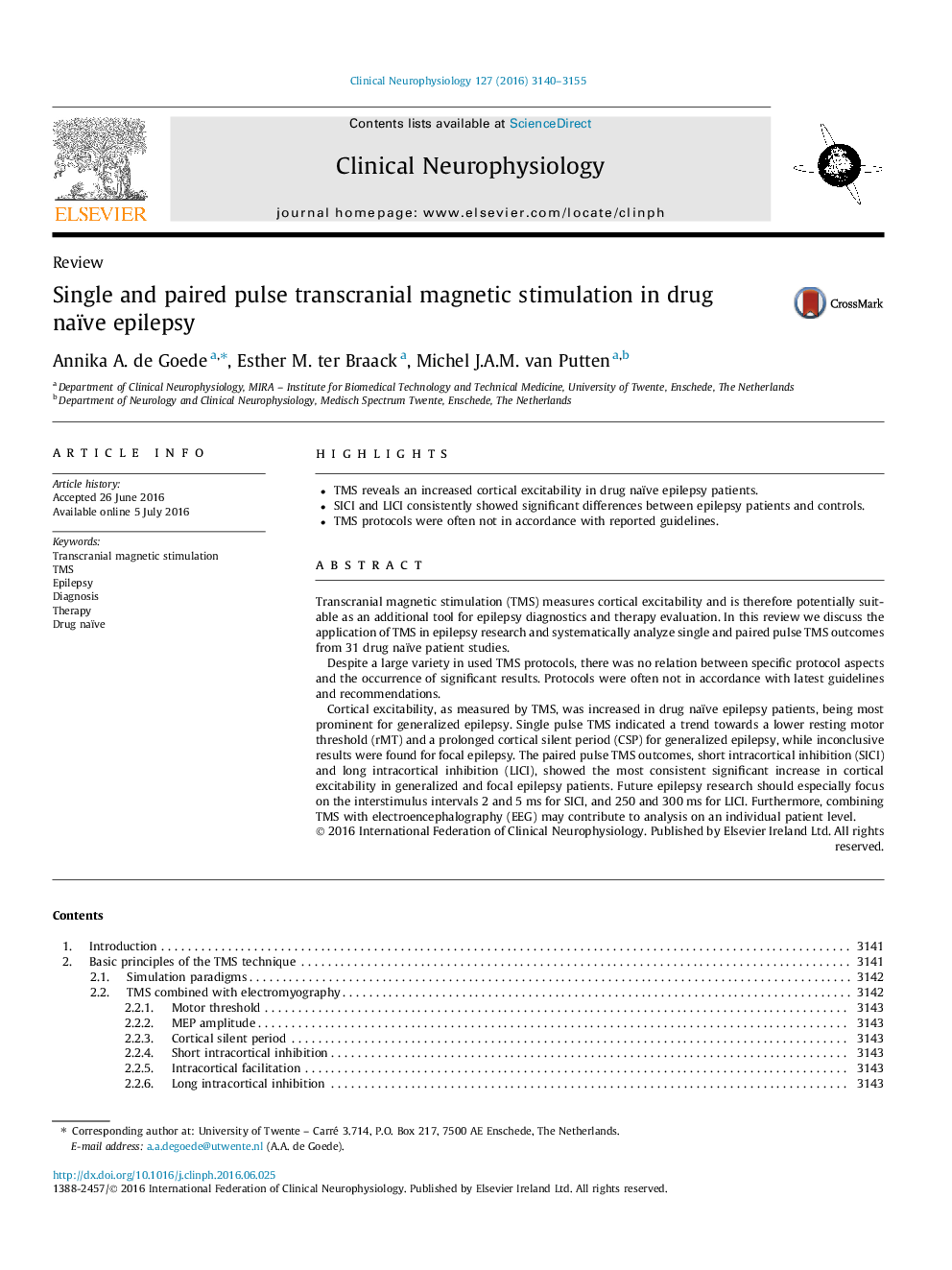| Article ID | Journal | Published Year | Pages | File Type |
|---|---|---|---|---|
| 6007265 | Clinical Neurophysiology | 2016 | 16 Pages |
â¢TMS reveals an increased cortical excitability in drug naïve epilepsy patients.â¢SICI and LICI consistently showed significant differences between epilepsy patients and controls.â¢TMS protocols were often not in accordance with reported guidelines.
Transcranial magnetic stimulation (TMS) measures cortical excitability and is therefore potentially suitable as an additional tool for epilepsy diagnostics and therapy evaluation. In this review we discuss the application of TMS in epilepsy research and systematically analyze single and paired pulse TMS outcomes from 31 drug naïve patient studies.Despite a large variety in used TMS protocols, there was no relation between specific protocol aspects and the occurrence of significant results. Protocols were often not in accordance with latest guidelines and recommendations.Cortical excitability, as measured by TMS, was increased in drug naïve epilepsy patients, being most prominent for generalized epilepsy. Single pulse TMS indicated a trend towards a lower resting motor threshold (rMT) and a prolonged cortical silent period (CSP) for generalized epilepsy, while inconclusive results were found for focal epilepsy. The paired pulse TMS outcomes, short intracortical inhibition (SICI) and long intracortical inhibition (LICI), showed the most consistent significant increase in cortical excitability in generalized and focal epilepsy patients. Future epilepsy research should especially focus on the interstimulus intervals 2 and 5Â ms for SICI, and 250 and 300Â ms for LICI. Furthermore, combining TMS with electroencephalography (EEG) may contribute to analysis on an individual patient level.
